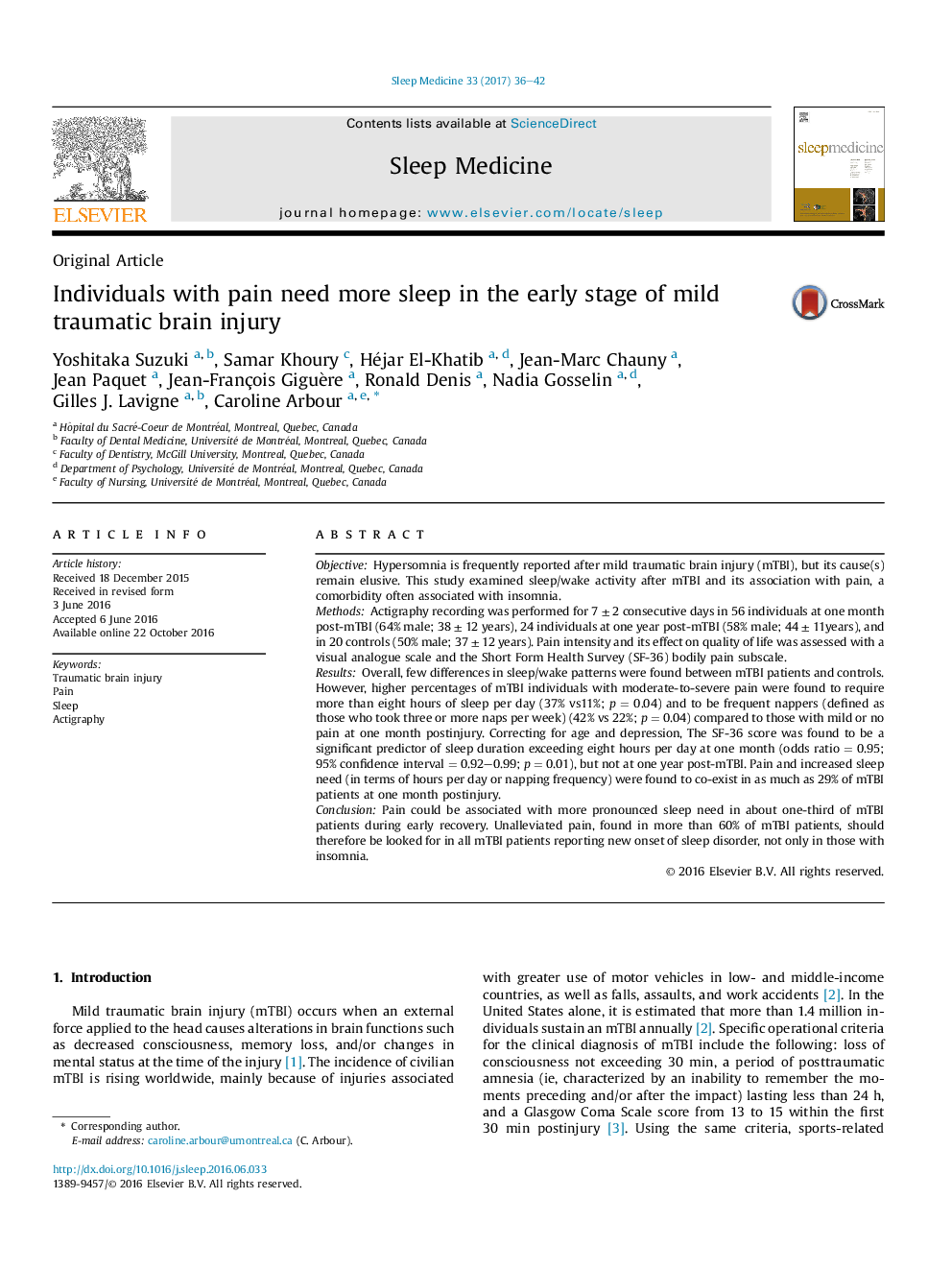| کد مقاله | کد نشریه | سال انتشار | مقاله انگلیسی | نسخه تمام متن |
|---|---|---|---|---|
| 5643746 | 1586476 | 2017 | 7 صفحه PDF | دانلود رایگان |
- More pronounced sleep requirements were observed in about a third of mTBI patients with pain at one month post-injury.
- While pain was highly prevalent at one year post-TBI, it did not interfere with patients' sleep duration or napping habits.
- In the first weeks after mTBI, pain should be searched for in all patients reporting new-onset of sleep disorder.
ObjectiveHypersomnia is frequently reported after mild traumatic brain injury (mTBI), but its cause(s) remain elusive. This study examined sleep/wake activity after mTBI and its association with pain, a comorbidity often associated with insomnia.MethodsActigraphy recording was performed for 7 ± 2 consecutive days in 56 individuals at one month post-mTBI (64% male; 38 ± 12 years), 24 individuals at one year post-mTBI (58% male; 44 ± 11years), and in 20 controls (50% male; 37 ± 12 years). Pain intensity and its effect on quality of life was assessed with a visual analogue scale and the Short Form Health Survey (SF-36) bodily pain subscale.ResultsOverall, few differences in sleep/wake patterns were found between mTBI patients and controls. However, higher percentages of mTBI individuals with moderate-to-severe pain were found to require more than eight hours of sleep per day (37% vs11%; p = 0.04) and to be frequent nappers (defined as those who took three or more naps per week) (42% vs 22%; p = 0.04) compared to those with mild or no pain at one month postinjury. Correcting for age and depression, The SF-36 score was found to be a significant predictor of sleep duration exceeding eight hours per day at one month (odds ratio = 0.95; 95% confidence interval = 0.92-0.99; p = 0.01), but not at one year post-mTBI. Pain and increased sleep need (in terms of hours per day or napping frequency) were found to co-exist in as much as 29% of mTBI patients at one month postinjury.ConclusionPain could be associated with more pronounced sleep need in about one-third of mTBI patients during early recovery. Unalleviated pain, found in more than 60% of mTBI patients, should therefore be looked for in all mTBI patients reporting new onset of sleep disorder, not only in those with insomnia.
Journal: Sleep Medicine - Volume 33, May 2017, Pages 36-42
